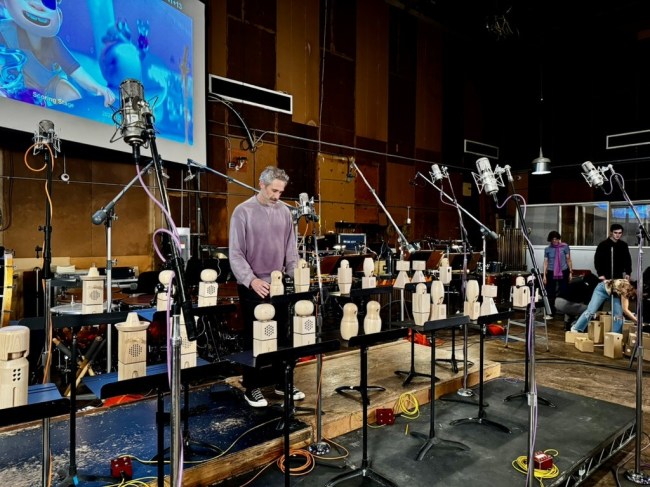Composer Rob Simonsen (“Deadpool & Wolverine,” “Ghostbusters: Afterlife”) put his love of sci-fi and synth sounds to good use on his animated debut score for Pixar’s “Elio.” He was also inspired to experiment in spacey musical ways to enhance the coming-of-age story about loneliness and the search for belonging in space.
“They brought me up to Pixar and I sat down and heard what the film was all about, and I was very moved, I felt very connected,” Simonsen told IndieWire. “I’m a huge alien and UFO nerd, and I think they were looking for a sound that they found in my work that had a lot of spaciousness and warm piano melodies, but with a sense of expansiveness.”
The composer, who worked with director Adrian Molina and later Madeline Sharafian and Domee Shi (“Turning Red”) when they succeeded him, said it was a smooth transition. The female directing duo provided greater motivation for Elio (Yonas Kibreab) to want to be abducted by aliens and strengthened his emotional arc.
“I think in a lot of ways they expanded the world, but they held onto the heart that I felt was there at the beginning, and carried it through in a really beautiful way,” said Simonsen, and I wrote an ‘Elio’ theme after first seeing the film when I got hired and that stayed through, which was really nice. Musically, we weren’t having to mess around with a lot of things. It was a fairly straight shot with ‘Elio’s’ theme, and it drives the beginning to the end.”

What inspired the theme was a Major Seventh, which offered an aspirational leap that mirrored Elio’s when reaching for the stars. “That was something I kept playing around with at the beginning,” Simonsen added. “That Major Seventh just felt right, and then figuring out how to support it with the chords underneath. I gravitate towards simple piano melodies with a big synth-fueled expansiveness around it. And it worked. Now it opens the film and we hear that theme as the Disney logo is playing.”
However, the theme is held back until we see a tear on Elio’s face during the early scene in the planetarium, where he watches the Golden Record Voyager leaving Earth in the observatory exhibit. “They have great instincts, those clever Pixar animators,” continued Simonsen. “They’re very deep studies of human emotion, so they know exactly the frame to release a theme and have the music turn.”
The composer then devised a one-note signal sound that reaches out into space with the Golden Record Voyager. “The sound plays on a synth that I created, and it echoes out and reverberates into space, and that then becomes a more fully realized musical motif when the signal from the universe comes back,” Simonsen said. “It’s a similar synth sound but with more notes to it. The idea of this call and response of a signal is something that we played with throughout the film.
But, of course, Simonsen saved the biggest musical bombast for Elio’s adventure on the Communiverse: the heavenly intergalactic space station, where he’s greeted by friendly, imaginative-looking aliens who think he’s Earth’s leader. “The signal sound gets turned into this large theme with full chordal support, with full orchestral support,” he added. “Everything gets unfurled, augmented with a lot of different synths and textures that are popping and floating around.

But instead of using a human choir, Simonsen switched to robot choir dolls from Teenage Engineering, based in Sweden. “They’ve built these speakers into these wooden bodies,” he said. “These little choir dolls have this very unique sound that I’ve never heard. They sound human, but clearly not human. The shape of the wood gives a shape for their voice, and they function like a choir. We hear the dolls when we first arrive to the Communiverse, and then they’re playing along somewhat the way you would hear a choir.
“I think it does a good job of giving us this otherworldly texture,” added Simonson. “But they have a limited functionality built within them. One of my assistants, Tiger Lily, a coding genius, was able to hack the dolls using Python. And we created some custom functionality, so we could use them in a more robust way. But we called [Teenage Engineering] to send us more dolls, and we ended up with a 30-voice choir. We put these tiny wooden dolls on this cavernous Sony scoring stage, singing their hearts out.”


